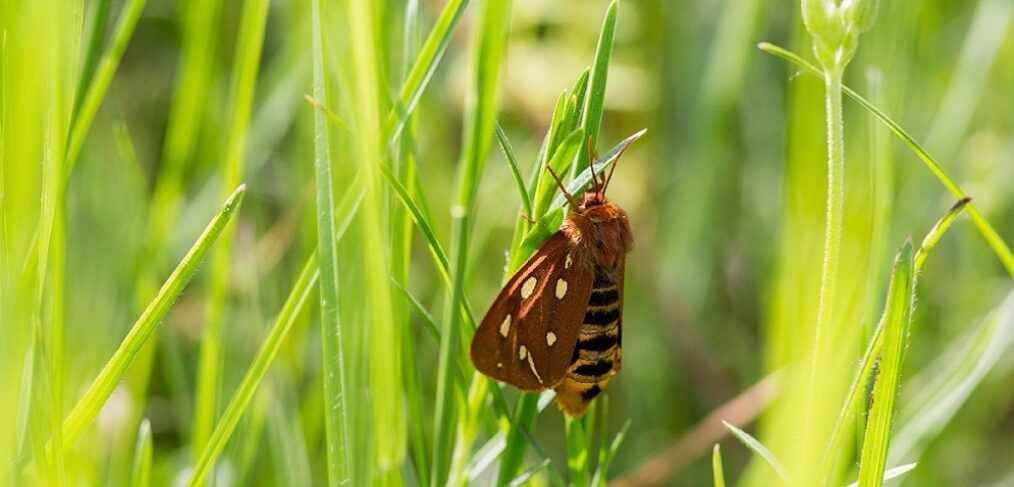
species of the week #74 – brown tiger moth
The lady-in-waiting is a moth from the bear moth family. In German they are called ” Hofdame” – courtlady. Their long folded wings with thick brown fur are reminiscent of the long coats with fur collars worn by medieval noblemen. The caterpillars of the lady-in-waiting are also particularly furry, as is the case with all bear moth species. In danger, they curl up into a hairy ball. When this is of no use, they change tactics: compared to other caterpillars, the lady-in-waiting caterpillars can run surprisingly nimbly and thus get to safety.
| Distribution status | Threatend with extinction |
| Remaining deposits | Saxony, Swiss Jura |
| Last sighting in rhineland-palatinate | 1999 Schloßböckelheim |
| Habitat | Calcareous grasslands, dry stony slopes with adjacent shady mossy areas |
| Threat | Biotope loss |
The caterpillars of the court lady are not particularly choosy and eat many different plants such as yarrow, hawkweed, spurge, widow’s-flower and dandelion. The moths, on the other hand, no longer consume food, but live only for mating. The males live for about a week, the females for up to a month. During this time they lay as many eggs as possible. During the day they sit resting in the grass, because the load of eggs in their bodies makes them very sluggish and difficult to flee from enemies. The egg load is clearly visible on the body, which sags strongly between the wings. As egg-laying progresses, the animals become more and more active. This enables them to lay their last eggs at a greater distance so that they can also colonise new areas. A total of about 400 to 500 small, white, spherical eggs are laid in packets of 50 to 100 below leaves.
The caterpillars overwinter in mosses and lichens growing on the ground, on which they also feed. A major threat is the moss-dwelling parasitic fungus Empusa aulicae, which can decimate populations or even wipe them out completely. The caterpillars can be seen briefly in spring, but as temperatures rise they crawl back into the moss layer. After two to three moults, they pupate among the plant material.
The yard lady is not particularly demanding in terms of food, but needs a special mosaic of habitats. Warm rough grassland with large adjacent areas of moss and dry scrub, sandy grassland or rocks in a confined space are ideal, because the caterpillars cannot cover long distances. These combinations are rare anyway, and even rarer are those associated with other habitats. Even when the yard lady reaches the moth stage, populations usually remain isolated. Unfortunately, lean habitats are declining sharply due to over-fertilisation and human cultivation, and with them the yard ladies that depend on them.
Here it goes to further species of the week
Image: By Christian Pirkl – Own work, CC BY-SA 4.0, https://commons.wikimedia.org/w/index.php?curid=69075173
